11 October
Level 0 (auditorium)
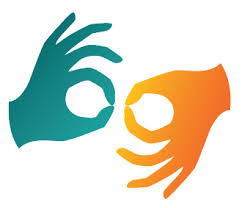 The event will be interpreted in Polish Sign Language (PJM) and English.
The event will be interpreted in Polish Sign Language (PJM) and English.
- 7:00 PM – 8:30 PM
- Presentations
Level 0
- 8:30 PM – 11:00 PM
- Premiere of the ‘Fluxes’ installation
Level 1
- 8:30 PM – 11:00 PM
- Opening of festival exhibitions
- 9:00 PM – 11:00 PM
- DJ set (Bartosz Weber)
To materialize a healthier and more stable future, we need not only innovative materials, but also stories that inspire us, liberate us from conventional thinking and inspire us to action.
As every year, Przemiany Festival begins with a meeting with special guests representing the worlds of science, design, and art. In short, fifteen-minute presentations, they will tell us about their research and creative practices.
In the second part of the evening, we invite you to the opening of festival exhibitions, the premiere of the ‘Fluxes’ installation, and to the café, where Bartosz Weber will perform his original DJ set.
Presentations and a discussion with the audience
How to design an innovation? - Karol Murlak
‘Design, which until recently was mainly associated with the use of proven materials, is now increasingly creating, modifying, and finding new applications for materials. During the opening of the festival, I will talk about the process of creating two eco-friendly materials. The first is a seaweed-based hydrogel, and the second is a wooden lattice that, in terms of strength, is comparable to solid wood, but unlike it, requires significantly less raw material.’
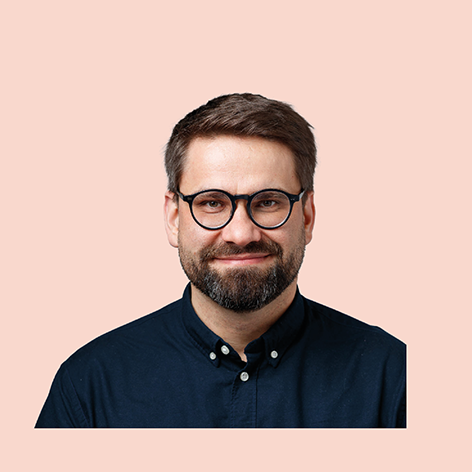 Karol Murlak - a designer, researcher, and lecturer. He is a professor at SWPS University and dean of the Design Faculty at the University of Texas in Austin. He graduated in interior design at Falmouth College of Art in the UK. He is also a graduate of the Academy of Fine Arts in Warsaw, where he received his MA and PhD degrees.
Karol Murlak - a designer, researcher, and lecturer. He is a professor at SWPS University and dean of the Design Faculty at the University of Texas in Austin. He graduated in interior design at Falmouth College of Art in the UK. He is also a graduate of the Academy of Fine Arts in Warsaw, where he received his MA and PhD degrees.
He combines design with science, and practice with theory. He focuses on the role of the material in design and everyday life. He is interested in creating materials, exploring new applications and production processes for them, as well as studying multisensory human interactions with materials and the role of physical prototypes in design and design education. He is the inventor of a patented wood expansion technology and co-creator of a plant-based hydrogel.
He has designed furniture, lighting, exhibitions, interior design, and art installations. He has worked for European and American universities, institutions, and companies, such as Deutsche Bank, Boston Consulting Group, Martinelli Luce, and the New York State Governor's Office. His projects have been presented in many exhibitions in Poland and around the world. He has published articles in journals such as ‘Craft Research’, ‘European Journal of Wood’, and ‘Wood Products and Forms’.
Nanofibres – From Medicine to Water and Energy Harvesting - Urszula Stachewicz
‘I will present one of the most popular and widely used methods for producing polymer fibres – electrospinning. I will discuss the ways of producing fibres, membranes, and scaffolds used in tissue engineering. These scaffolds function similarly to a skeleton in our bodies – they help cells grow by creating a specific form. Materials engineering often draws inspiration from nature. Nanofibres are porous, much like the hair of polar bears and the feathers of penguins.’
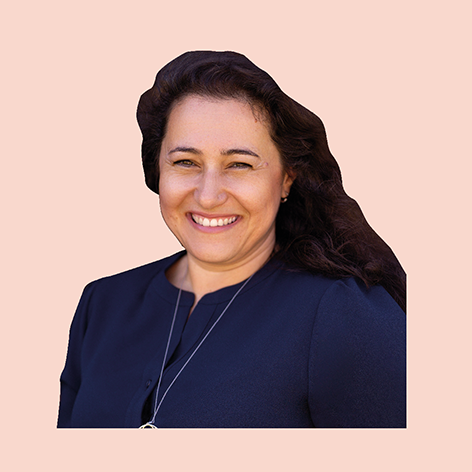 Urszula Stachewicz - Professor of Materials Engineering at the AGH University of Science and Technology in Krakow, where she leads the Electrospun Fibres Group in the Faculty of Metals Engineering and Industrial Computer Science.
Urszula Stachewicz - Professor of Materials Engineering at the AGH University of Science and Technology in Krakow, where she leads the Electrospun Fibres Group in the Faculty of Metals Engineering and Industrial Computer Science.
Her work on a PhD in electrohydrodynamics of liquids at Delft University of Technology allowed her to conduct research on the application of electrospraying as a method for on-demand deposition at Philips Research Laboratories in Eindhoven, Netherlands. She completed a postdoctoral internship at Queen Mary University of London, and worked at Nanoforce Technology Ltd., where she focused on electrospinning polymer fibres. In 2015, she received a scholarship from the Minister of Science and Higher Education for outstanding young scientists, and in 2016, she won the Polityka Science Award. In 2018, she was a visiting scholar at the University of Cambridge.
Her research focuses on the properties of electrospun fibres used in biomedicine and for water and energy harvesting. She derives her research ideas from nature. She is the author of over 100 scientific publications in prestigious international scientific journals. In 2020, she was awarded an ERC BioCom4SavEn grant, and in 2024, she was the chair of the international periodic conference Electrospin2024.
Sensemaking through Seaweed - Julia Lohmann
‘Marine organisms are my muse, material, and method for encouraging everyone to take action with a constructive, empathetic, and multispecies mindset. My work shows that seaweeds can bridge art and science, and working with them supports and deepens research on the state of our seas and oceans. At the festival, I would like to discuss building active communities across divides and the importance of combining knowledge with care and action.’
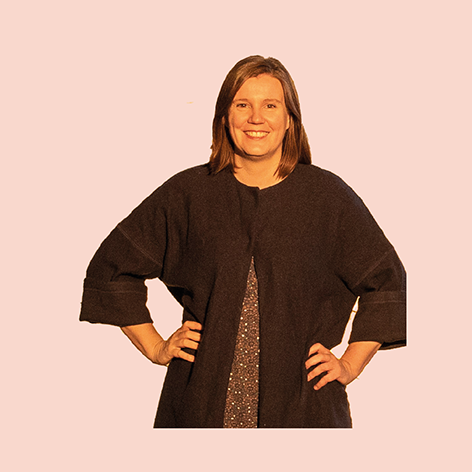 Julia Lohmann - an artist, designer, and professor of contemporary design practices at Aalto University in Finland. She uses natural materials from flora and fauna to explore our ethical and material value systems. She advocates a regenerative way of thinking based on the complex interdependent relationships of non-human and human beings in the Earth's ecosystem.
Julia Lohmann - an artist, designer, and professor of contemporary design practices at Aalto University in Finland. She uses natural materials from flora and fauna to explore our ethical and material value systems. She advocates a regenerative way of thinking based on the complex interdependent relationships of non-human and human beings in the Earth's ecosystem.
Since 2007, Julia Lohmann has been creating large-scale sculptures and artworks from seaweeds, which have become her material, method, and muse. As a designer in residence at the V&A, she founded the Department of Seaweed in 2013 – a multidisciplinary community of specialists exploring the sustainability of seaweeds as a design material. Julia Lohmann's work can be found in major public and private collections around the world.

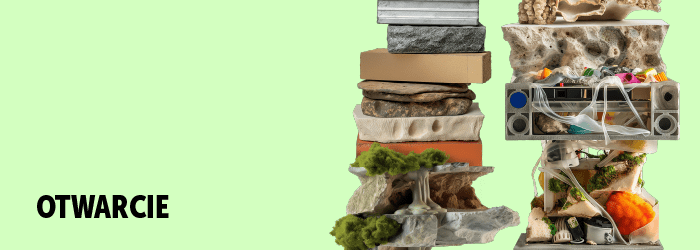
 Karol Murlak - a designer, researcher, and lecturer. He is a professor at SWPS University and dean of the Design Faculty at the University of Texas in Austin. He graduated in interior design at Falmouth College of Art in the UK. He is also a graduate of the Academy of Fine Arts in Warsaw, where he received his MA and PhD degrees.
Karol Murlak - a designer, researcher, and lecturer. He is a professor at SWPS University and dean of the Design Faculty at the University of Texas in Austin. He graduated in interior design at Falmouth College of Art in the UK. He is also a graduate of the Academy of Fine Arts in Warsaw, where he received his MA and PhD degrees.  Urszula Stachewicz - Professor of Materials Engineering at the AGH University of Science and Technology in Krakow, where she leads the Electrospun Fibres Group in the Faculty of Metals Engineering and Industrial Computer Science.
Urszula Stachewicz - Professor of Materials Engineering at the AGH University of Science and Technology in Krakow, where she leads the Electrospun Fibres Group in the Faculty of Metals Engineering and Industrial Computer Science.  Julia Lohmann - an artist, designer, and professor of contemporary design practices at Aalto University in Finland. She uses natural materials from flora and fauna to explore our ethical and material value systems. She advocates a regenerative way of thinking based on the complex interdependent relationships of non-human and human beings in the Earth's ecosystem.
Julia Lohmann - an artist, designer, and professor of contemporary design practices at Aalto University in Finland. She uses natural materials from flora and fauna to explore our ethical and material value systems. She advocates a regenerative way of thinking based on the complex interdependent relationships of non-human and human beings in the Earth's ecosystem.